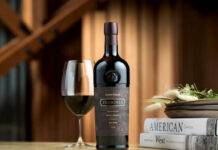Intelligent use of liqueurs can help bars’ drinks offer stand apart

FLAVOUR is the name of the game when it comes to drinks. With many consumers looking to experience something different and memorable in their libations of choice, liqueurs – with their seemingly endless diversity – can really come into their own.
And, as demand for cocktails heightens in Scotland, it’s increasingly important for bars to stock a broad selection of liqueurs and use them in the right ways, drinks firms told SLTN.
The significant role that liqueurs can play across serves in the on-trade was laid bare by co-owner of The Braemble Gin Liqueur and Cross Brew Coffee Liqueur, as well as Edinburgh bars Bramble and Lucky Liquor, Jason Scott.
He said: “You’ll regularly see an expansive range of unusual and/or homegrown liqueurs in any good cocktail bar in Scotland.
“Bartenders are frequently reaching for these products to provide a broader palette of flavours in their mixed drinks.
“Any classic cocktail can be given a lift or an almost entirely new identity by adding as little as half a shot of liqueur to the recipe.
“With more intriguing flavours entering the category it also entices the consumer to step out of their comfort zone and drives the bartender to design more innovative serves.”
The need to stand out from the crowd with interesting mixed drinks was also flagged by Jägermeister’s category and trade marketing manager, Giles Mountford.
He said: “We’re seeing a continuation of the cocktail boom, with both old favourites and new more avant-garde drinks coming to the fore – the key is to offer both, meeting the demand of the casual cocktail drinker and also the bold drinks explorer.
“Bitters, herbal liqueurs and amaros have been driving flavour forward for several years now as consumers look for more complex taste profiles, outside some of the overly sweet classics; smoke, shrubs and pickles also all support this trend for the more unusual.”
As consumer knowledge of the liqueurs category grows, it’s up to bartenders to raise their games in terms of both knowledge and serves, said Tina Connolly, brand manager for the Luxardo range of liqueurs and spirits at Cellar Trends, who added flawless liqueur-based serves needn’t be complicated.
“A high quality, branded liqueur plus a popular mixer will always be a satisfying serve,” she said.
“More and more so, consumers are recognising liqueurs by brand, in the same way as they may ask for a quality spirit. So knowledgeable combinations recommended by bar staff are always effective.
“The aim is to set off the delicate nuances of a liqueur. Try a layering of flavours, by adding a simple herb garnish that has been very slightly crushed to release their fresh aromas.”
The pursuit of flavour within the drinks industry has combined with the explosive expansion of gin to profoundly affect the liqueurs category as the number of gin liqueurs available to licensees grows, reckons Joanne Motion, customer marketing manager at Ian Macleod Distillers, owner of Edinburgh Gin and its range of gin-based liqueurs.
She said: “The overarching trend across many neighbouring spirits categories recently has also been driven by flavour, with flavoured gin and gin liqueurs now delivering 84% of all spirits growth in the on-trade last year.
“As more customers gravitate towards premium spirits in general and gin in particular, gin liqueurs offer them an opportunity to engage with the category in an accessible way, particularly if they may not have previously engaged with full-strength London Dry-style gins.”
Thomas Bennett, trade marketing controller at Global Brands, distributor of liqueur brand Teichenné, agreed.
He said: “The gin boom will have naturally had an impact on liqueurs within bars in Scotland, as consumers turn their attentions to the gin & tonic and potentially away from cocktails.
“That said, the cocktail category is still in growth as taste, styles and flavours continue to evolve.”
And with a number of Scottish liqueurs now on the market, Bennett reckons the category may follow gin’s lead as locally-produced expressions could be well-placed to do well.
He said: “The gin market has become very regionalised so it’s very possible that liqueurs could go in the same direction, especially within gin liqueurs.”



















